What Is the Safe Internal Temp for Chicken Breast?
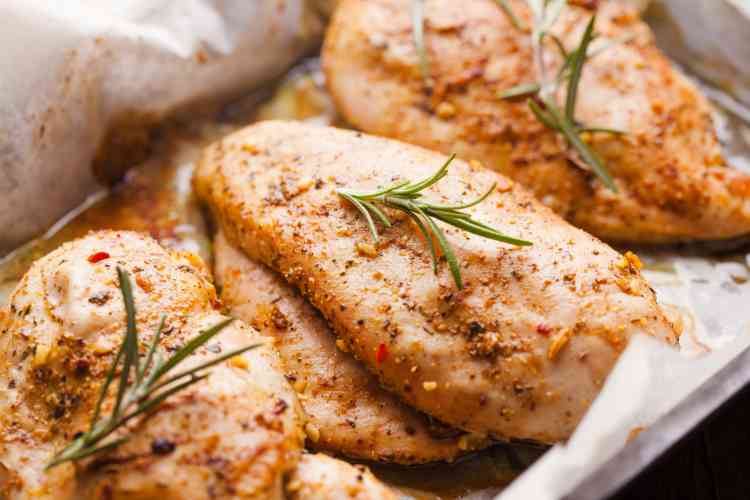
Knowing the correct internal temp for chicken breast can be challenging, even for experienced cooks. Whether you're preparing a quick weeknight dinner or cooking an elaborate meal for a special occasion, achieving the right temperature ensures not only flavor but also safety.
One key to the perfect chicken dish is timing. In a matter of seconds, your chicken can go from perfectly juicy to tough and dry. So, what techniques are useful for measuring the internal temp for chicken breast? In this post, we'll explore the safest internal temp for chicken breast and share tips to achieve juicy, perfectly cooked poultry every time.
Jump to Section
- Minimum Internal Temp of Chicken Breast
- What Is the Best Chicken Breast Internal Temp?
- How To Measure Chicken Breast's Internal Temperature
- How Long To Cook Chicken Breast in the Oven
- How To Know When the Chicken Breast Is Done
- Tips To Avoid Overcooking Chicken Breasts
- Our Favorite Chicken Breast Recipes
Minimum Internal Temp of Chicken Breast
According to the U.S. Food and Drug Administration (FDA), all poultry should reach a safe minimum internal temperature of 165 °F (73.9 °C) as measured with a food thermometer. This temperature is crucial for eliminating harmful bacteria such as Salmonella and Campylobacter, which are common in raw poultry and can cause foodborne illnesses.
When it comes to the internal temp for chicken breast, the same rule applies. The thickest part of the breast must reach 165 °F (73.9 °C) to ensure it's safe to eat. Similarly, the chicken thigh internal temp should also reach this minimum temperature. When cooking a whole chicken, the entire bird must reach this temperature throughout. To properly check a whole chicken, it’s useful to insert the food thermometer into multiple locations.
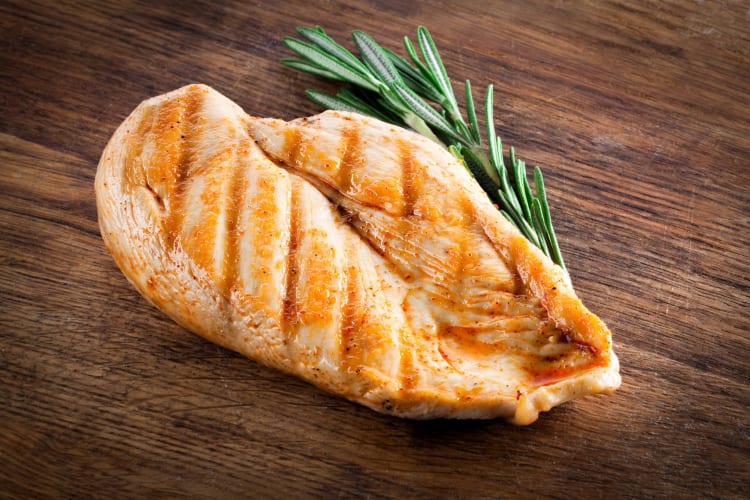
What Is the Best Chicken Breast Internal Temp?
The best internal temp for cooked chicken breast can vary depending on personal preference and cooking method. For those who prioritize safety above all, sticking to 165°F (73.9°C) is the best choice. When you reach this internal temp for chicken breast, your food is fully cooked and safe to eat. The meat will be firm and white throughout, with clear juices. However, some may find chicken cooked to this temperature slightly dry.
For juicier results, many chefs recommend an internal temp for a chicken breast of 150-155°F (65.6-68.3°C), followed by a three-to-five-minute rest period. During this rest, the temperature continues to rise slightly, and the juices redistribute throughout the meat. This method results in a more tender and moist chicken breast while still ensuring safety.
Others push it even further, aiming for an internal temp for a chicken breast of 145-150°F (62.8-65.6°C) when using precise techniques like sous vide cooking. At this temperature range, the chicken remains incredibly juicy and tender, with a softer texture that some describe as silky.
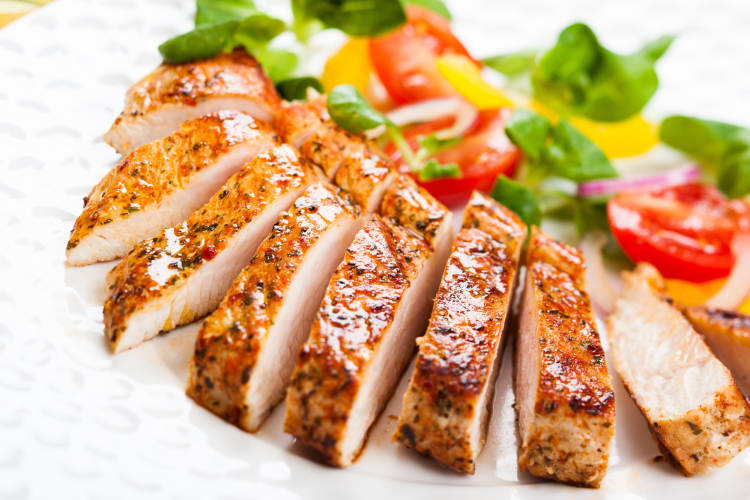
What Is the Best Internal Temp for Boneless Chicken Breast?
The internal temp for boneless chicken breast should reach the same safe minimum of 165°F (73.9°C) as bone-in chicken. However, boneless breasts cook faster and more evenly, allowing for more precise temperature control. Some chefs prefer to cook boneless chicken breasts at 160°F (71.1°C) and let them rest, during which the temperature rises to the safe 165°F while retaining moisture.
The main difference lies in cooking time and moisture retention. Bone-in chicken takes longer to cook but is more forgiving, while boneless requires closer monitoring to prevent drying out.

What Is the Best Internal Temp for Baked Chicken Breast?
When baking in the oven, the best internal temp for chicken breast remains 165°F (73.9°C) for safety, though some prefer to remove it at 160°F (71.1°C) and let it rest to reach the final temperature.
To effectively measure the internal temp for chicken breast, it's better to use an instant-read thermometer and insert it into the thickest part of the meat, avoiding contact with the baking dish or any bones. Keep in mind that oven temperatures can vary, so relying solely on cooking time isn't always recommended.

What Is the Best Internal Temp for Grilled Chicken Breast?
When grilling, it's often recommended to remove the chicken from the heat at 160°F (71.1°C) and let it rest, as the temperature will continue to rise. When measuring the internal temp for chicken breast that’s been grilled, there are a few key points to keep in mind.
First, use an instant-read thermometer and insert it into the thickest part of the breast, avoiding contact with the grill grates or any bones. Keep in mind that grilling can create hot spots, so check multiple areas of the chicken for consistent doneness.
Additionally, the exterior of grilled chicken can brown quickly due to high heat, potentially giving a false impression of doneness. Therefore, it's crucial not to rely on visual cues alone.

How To Measure Chicken Breast's Internal Temperature
To measure the internal temp of chicken breast, insert the thermometer probe into the thickest part of the meat, avoiding any bones, fat or gristle. If you're cooking multiple chicken breasts, it's wise to check each one, as they may cook at slightly different rates. For boneless breasts, aim for the center of the thickest part. For bone-in cuts, insert the thermometer close to, but not touching the bone.
When checking the internal temp for chicken breast, avoid repeatedly poking the meat, as this can cause juices to escape, potentially leading to drier chicken. Instead, try to get an accurate reading in one or two attempts.

How Long To Cook Chicken Breast in the Oven
Here's a general guideline for cooking chicken breast in the oven:
- 350°F (175°C) oven: 25-30 minutes
- 375°F (190°C) oven: 20-25 minutes
- 400°F (200°C) oven: 18-22 minutes
- 425°F (218°C) oven: 15-20 minutes
- Bone-in chicken breasts: Add 5-10 minutes to these times.
- Large chicken breasts (8 oz or more): May need up to 5 additional minutes.
- Sous vide method: 145°F (63°C) for 1.5 to 2 hours, then sear briefly
Remember to always check that the internal temperature has reached 165°F (74°C) before serving.

How To Know When the Chicken Breast Is Done
The best way to identify it is by checking the internal temp for your chicken breast, which should reach 165°F (74°C) at the thickest part. The equipment you use to check the temperature can play a key role, often being the difference between a fast read and a slow read, the latter of which can interrupt the cooking of the chicken (or, indeed, any other meat) and lead to less desirable results. Below are the methods you can use to check your chicken's doneness.
Meat Thermometer Method
Using a meat thermometer is the best method to check the internal tempt for chicken breast because it provides an accurate, reliable measurement that ensures food safety while preventing overcooking.
The Harold Import Co. Large Face Meat Thermometer is an excellent tool for measuring internal meat temperatures. Its key features include:
- Large, easy-to-read face for quick temperature checks
- Durable stainless steel construction
- Designed for use in ovens, grills, and smokers
- Temperature range from 120°F to 200°F (49°C to 93°C)
- Marked safe cooking temperatures for various types of meat
- NSF certified for food safety
- 5-inch stem for accurate deep temperature readings
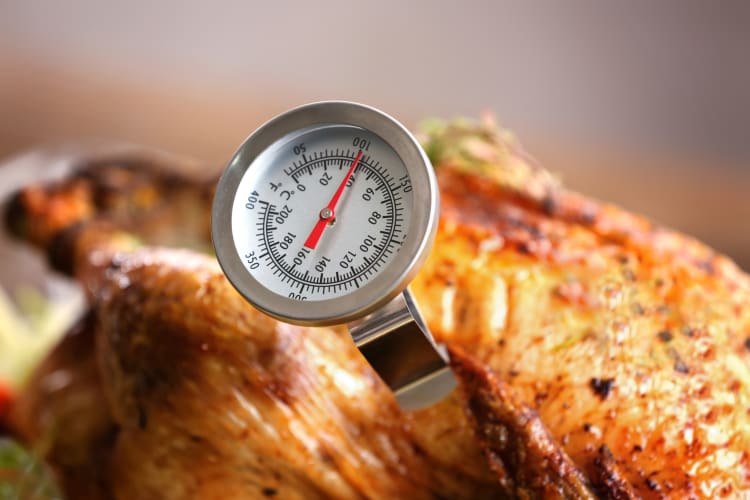
Check Texture and Appearance
While checking the internal temp for chicken breast with a thermometer is the most reliable method, visual and textural cues can provide additional indicators of doneness. When cooked to the proper internal temp for chicken breast (165°F or 74°C), the meat should appear white or pale throughout, with no pink areas remaining. The texture should be firm yet tender, and when pierced with a fork, the juices should run clear rather than pink.
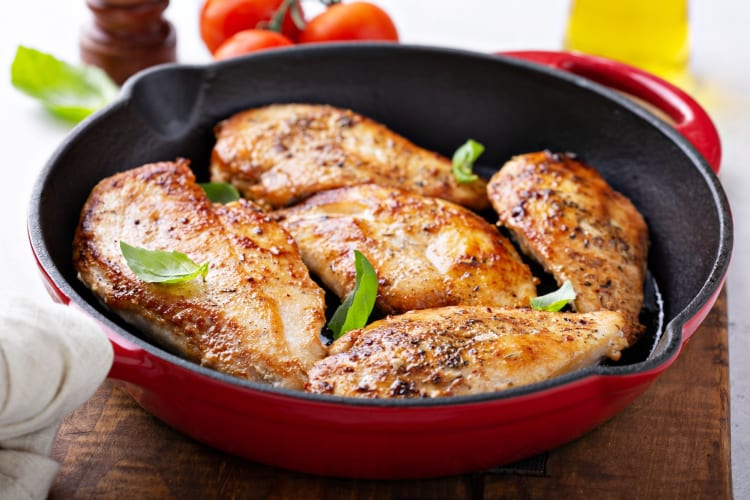
Tips To Avoid Overcooking Chicken Breasts
- Use a Meat Thermometer: Ensure the internal temp for chicken breast reaches 165°F (74°C). This helps you avoid undercooking or overcooking, as visual cues can be unreliable.
- Flatten the Chicken Breasts: Pound the chicken to an even thickness. This allows for more uniform cooking and prevents thinner parts from drying out before the thicker parts are done.
- Brine Before Cooking: Soak the chicken in a saltwater solution for 15 to 30 minutes. This adds moisture and enhances flavor, making the chicken more resistant to drying out.
- Cook at the Right Heat: Use medium to medium-high heat. Cooking too quickly on high heat can cause the exterior to dry out or burn before the interior is cooked through.
- Rest the Chicken: Let the chicken rest for a few minutes after cooking. This allows the juices to be redistributed, ensuring the meat remains moist and flavorful.
- Use a Timer: Set a timer based on the thickness of the chicken and the cooking method. This helps prevent cooking longer than necessary, which can lead to dryness.

Our Favorite Chicken Breast Recipes
Once you’ve mastered the internal temp for chicken breast you can start exploring and getting creative in the kitchen. Here are three delicious recipes that combine flavor with innovation.
Mozzarella Stuffed Chicken Breast
The mozzarella-stuffed chicken breast combines rich flavors, making it perfect for a quick and satisfying meal. This recipe involves creating a pocket in chicken breasts, seasoning them and stuffing them with shredded mozzarella. The chicken is then seared in olive oil and simmered in a homemade tomato sauce made with crushed tomatoes, garlic, oregano, salt and pepper until fully cooked.
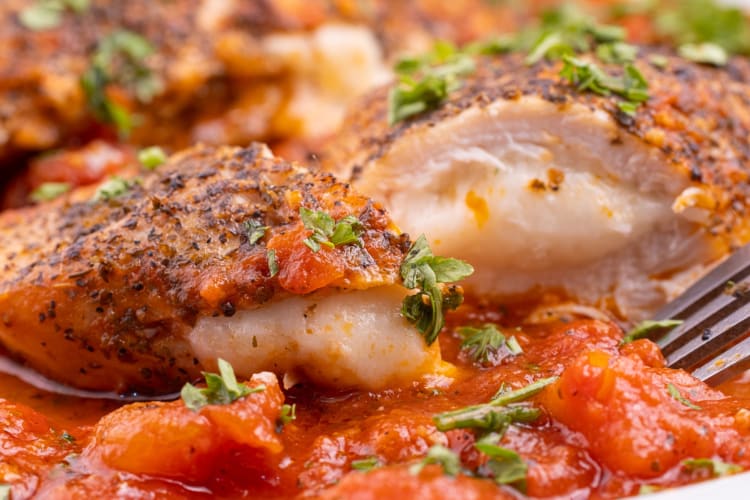
Asiago Tortelloni Alfredo With Grilled Chicken
The Asiago Tortelloni Alfredo with Grilled Chicken recipe involves cooking cheese tortelloni and grilling chicken breasts. The dish is then prepared with a rich Alfredo sauce made from butter, garlic, heavy cream and Asiago cheese. The grilled chicken is sliced and served over the tortelloni, all topped with fresh parsley for garnish.
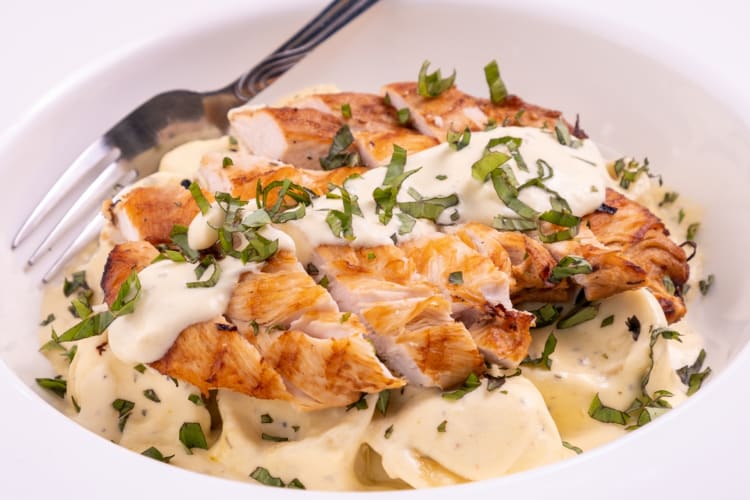
Peach Bourbon Chicken
If you want to make a dish that's a little more elevated, try the peach bourbon chicken. To make this recipe, you start by roasting a small chicken with onion, water and white wine until the skin is golden and crispy. Meanwhile, fresh peaches are caramelized with sugar and then combined with bourbon, reserved chicken juices and peach juice to create a thick, syrupy glaze. The chicken is then topped with this sweet and savory bourbon peach glaze and served.
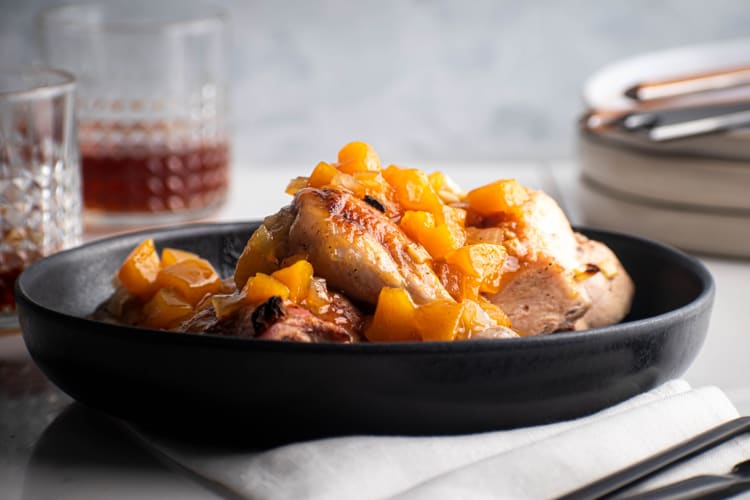
Once you get a handle on the internal temp for chicken breast, making new recipes becomes easier. Just remember: the key to avoiding undercooking or overcooking lies in using a thermometer. A digital thermometer, combined with visual cues, minimizes errors, ensuring that what you make is not only delicious but also safe to eat. So, go ahead and get cooking! Chicken breast is one of the most versatile meat cuts available, and now that you know how to ensure moist and tender results every time, you'll be amazed at what you can conjure up with it.
For even more ways to explore your favorite foods, check out other experiences happening on Cozymeal.



FOOD FOR THOUGHT?
Join the conversation.